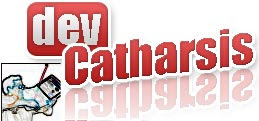A friend of mine asked me how did I handle mail? Here's how:
- spam is now a non-issue - your provider, should it be gmail, hotmail or your organization, should have this problem sorted out. If this is not the case, let SpamBayes do the trick;
- still on spam: some people worry about spam-killers false-positives. Just don't. They're bound to appear, but it is simpler to recover the few false-positives from the junk folder then to cleanup you entire inbox;
- Borrowed from J.D. Meier: "Filter out everything that's not directly to you. To do so, create an inbox rule to remove everything that's not directly To or CC you. As an exception, I do let my immediate team aliases fall through"; in my case, I do something radical which is chabging the semantics of the message, I admit: I mark them as "Not Important";
- I don't have a "Waiting-Followup” neither a “Needs Response or Action" folder. For me this are views. Outlook just do it like no other;
- I arrange my mailbox simply by
/ , and most of my mail is assigned to the folders by the rules that I define. In me experience, projects have an inherent priority too.
My workflow is quite simple: I tend to prioritize the messages elected by my rules, manually catalog the untrapped ones, and to be honest, on work peaks, I just cannot read all thye content of the messages the rule sent to the bottom of the pile.
Here are other ways, collected by cameromoll:
Seems everyone else does, as well. Intel recently declared Fridays “Zero E-mail Fridays”:
E-mail isn’t forbidden, but everyone is encouraged to phone or meet face-to-face. The goal is more direct, free-flowing communication and better exchange of ideas, Intel principal engineer Nathan Zeldes says in a company blog post.Tim Ferris, author of The 4-Hour Workweek, recommends checking email twice a day or less:
The fastest method I’ve found for controlling the e-mail impulse is to set up an autoresponder that indicates you will be checking e-mail twice per day or less…. My personal e-mail autoresponder limits me to once per day and indicates ‘I check e-mail once per day, often in the evening. If you need a response before tomorrow, please call me on my cell.’ My business e-mail autoresponder, on the other hand, gives me the option to check email once every 7-10 days.Mike Davidson recently tried managing email overload by replying to every email using five sentences or less:
Every e-mail I send to anyone, regardless of subject or recipient, will be five sentences or less. Like a cinquain. Ideally, it would be a 160 character count like an SMS message, but since that would require an actual e-mail plug-in (viz. “work”), we’ll go with the much-easier-to-count concept of sentences instead.Lastly, Keith Robinson, self-proclaimed GTD freak, uses a series of folders and sub-folders to process his inbox:
What I do is have a top level folder for my each of my main alternate addresses. Within these folders I’ve got sub folders broken down various ways, depending on the needs of the address…. I then have two top level folders for things that may need action. A “Waiting-Followup” folder for things I’m waiting on someone else for or things that aren’t urgent, and a “Needs Response or Action” folder for things I need to respond to.


No comments:
Post a Comment